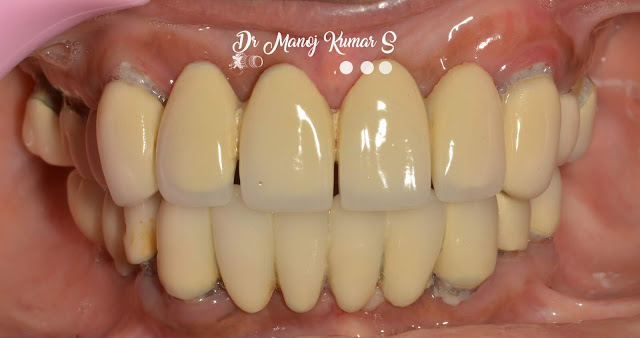Case 47: Occlusal stamp technique for direct composite restoration
Case 47: Occlusal stamp technique for direct composite restoration
As the name indicates, a stamp is a preformed contour which impresses or creates a replica when placed on an object. With regards to dentistry, in the field of composite restorations any pit and fissure decay which requires a restoration and has not covitated the tooth structur externally is an ideal candidate for this occlusal stamp technique.
Here in this case its a simple GV Blacks class 1 situation of dental caries on tooth no 2.7. Ther sequence of stemps involved are as follows:
1. After the initial diagnosis and confirmation with a radiograph, The fissures and the occlusal table is cleansed and a very thin coat of vaseline is optional, followed by application of flowable composite on the occlusal table creating a small mound. Before curing it place a small plastic applicator tip and then light cure it. Once done just tease the composite with a sharp tip of an explorer and it will easily pop out. Now the occlusal stamp is ready.
2. Complete the cavity preparation and isolation with rubber dam.
3. Etch and bond the prepared tooth surface.
4. Apply the bulk-fill composite and place a thin teflon on the surface covering the occlusal table. Now use the stamp and seat it just like how it was before taking it out.
5. Now light cure from the external and then remove the stamp and the teflon and complete the curing. Any excess flash can be trimmed and finished.
6. Final finishing and polishing is carried out and occlusion assessed.
This case was done by me at Parasu Dental College, Chennai
As the name indicates, a stamp is a preformed contour which impresses or creates a replica when placed on an object. With regards to dentistry, in the field of composite restorations any pit and fissure decay which requires a restoration and has not covitated the tooth structur externally is an ideal candidate for this occlusal stamp technique.
Here in this case its a simple GV Blacks class 1 situation of dental caries on tooth no 2.7. Ther sequence of stemps involved are as follows:
1. After the initial diagnosis and confirmation with a radiograph, The fissures and the occlusal table is cleansed and a very thin coat of vaseline is optional, followed by application of flowable composite on the occlusal table creating a small mound. Before curing it place a small plastic applicator tip and then light cure it. Once done just tease the composite with a sharp tip of an explorer and it will easily pop out. Now the occlusal stamp is ready.
2. Complete the cavity preparation and isolation with rubber dam.
3. Etch and bond the prepared tooth surface.
4. Apply the bulk-fill composite and place a thin teflon on the surface covering the occlusal table. Now use the stamp and seat it just like how it was before taking it out.
5. Now light cure from the external and then remove the stamp and the teflon and complete the curing. Any excess flash can be trimmed and finished.
6. Final finishing and polishing is carried out and occlusion assessed.
This case was done by me at Parasu Dental College, Chennai













Comments